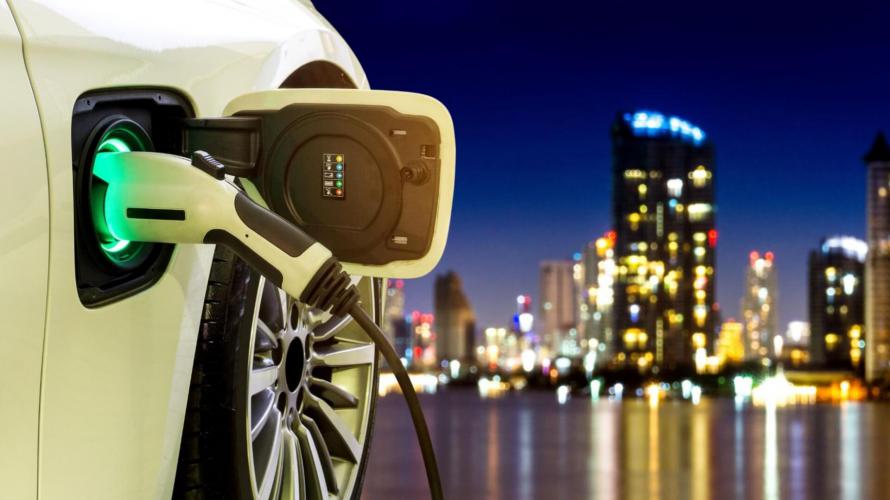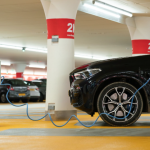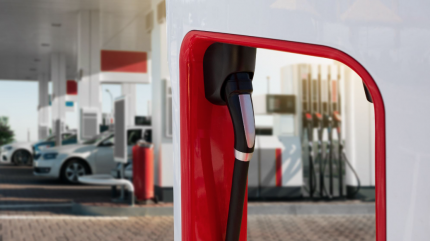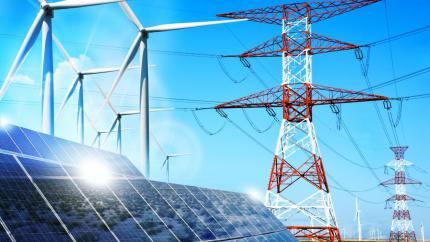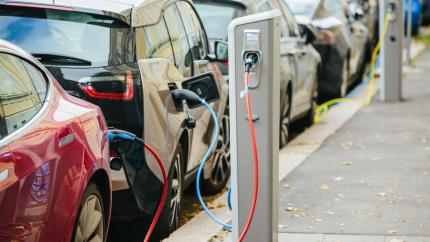Close your eyes and imagine yourself on a busy city street. There are noises all around – buses rumbling past, trucks rushing along delivery routes and cars honking and idling. Would it even feel like a city without all that noise?
As electric vehicles (EVs) continue to become more widespread, we’re about to find out.
Companies like Amazon, Uber, UPS and even municipal sectors like public transport and trash collection are moving toward utilizing EVs more. That will change the way cities look and sound around the world.
EVs and Ridesharing
While ridesharing companies like Uber and Lyft have long since overtaken the yellow cab as the dominant player in the field of private urban transportation, the presence of their vehicles remains a defining factor of cities.
The coming of EVs won’t mean that Uber, Lyft and others are going away. Far from it. Lyft has pledged to ensure that 100% of its cars are EVs by 2030, and Uber has implemented a service called Uber Green, where for a dollar extra, customers can specifically request a hybrid or electric vehicle.
So despite the fact that rideshare vehicles won’t be vanishing from city streets, they will be changing. In the next few years, residents can expect their hailed ride to run electric power more often than not.
Electric Delivery
Your packages will also be making trips in EVs. Major delivery companies like Amazon and UPS are investing in EV fleets, with Amazon bringing them to 15 cities in 2021 with plans to have 100,000 on the road by 2030.
UPS has ordered 10,000 EVs of its own, and FedEx plans to be fully electric by 2040.
These EVs will go hand-in-hand with other last-mile delivery options like drones and autonomous vehicles, further shifting the package delivery industry toward electrification.
EVs in the Municipal Sector
It isn’t just the private sector that will be seeing a transition to EVs in cities. Many municipal services are shifting to electric technology.
Public transportation, refuse collection, city maintenance and more are all strong candidates for electrification because of their predictable routes and consistent vehicle downtime. In 2014, Chicago became the first city in America to bring an electric garbage truck to its streets.
In July, New York City took the step toward electrification as well, rolling out 7 EV garbage trucks that service all of the city’s boroughs.
Buses are getting in on the action too. In Shenzhen, China, home of major EV maker BYD, 16,000 electric buses are already in operation. China is the worldwide leader for electric buses, but Europe and America are slowly waking up to their benefits. Europe already has thousands of them in action, and the U.S. had over 2,800 delivered or on order at the end of 2020.
Additionally, cities in most major areas of the world have already begun to make use of electric vehicles in their municipal fleets for city maintenance, meter monitoring and more.
Changing Physical Landscape
So, city vehicles of almost every kind will be gradually switching to electric, but what does that actually mean for what it will be like to be in a city?
For one, it’ll mean a reduction in noise pollution. Internal combustion engines (ICEs) are significantly louder than electric motors, and as buses, cars, trucks and city vehicles shift from ICEs to EVs, the familiar sound of rumbling vehicles will lessen.
For some, that change will mean a welcome cutback on disruptions. For others, the quieting of cities could be an unpleasant shift as familiar sounds slowly fade away.
EVs will also bring about a shift in the physical landscape of cities. With the new EVs will come charging stations. Cities around the world have already begun to construct stations at centers of activity and in neighborhoods. Although the current level of charging stations isn’t high enough to meet the projected demand for EVs, as more cars hit the road, more chargers will find their way into cities.
Lastly, more EVs will mean less air pollution. A study published by the European Environment Agency found that EVs are significantly better for air quality than traditionally-fueled vehicles. Some claim that EVs increase pollution from tire particles, but no comprehensive study has confirmed that. On the contrary, areas that saw a large uptick in EV use also saw a reduction in premature deaths due to pollution.
Not only will cities look and sound different in the next few decades, but they’ll feel different too.
